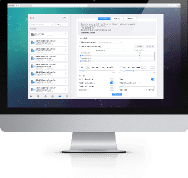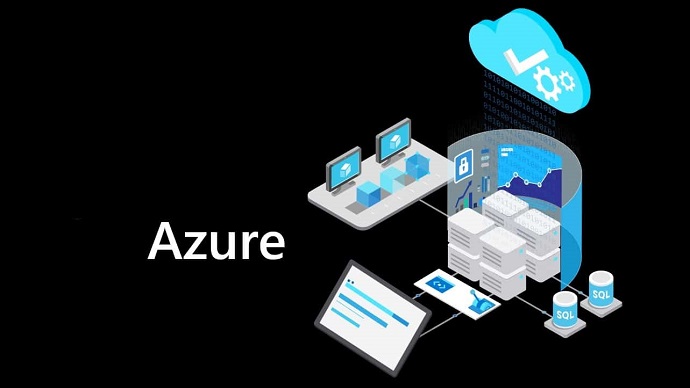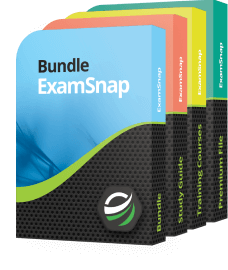Use VCE Exam Simulator to open VCE files

ACD101 Appian Practice Test Questions and Exam Dumps
A company wants to enhance user feedback collection by displaying a small toolbar on every page of their application. This toolbar should appear at the bottom of each screen and contain three icons representing user sentiment: a sad face, a neutral face, and a happy face. Users will be encouraged to select the icon that best reflects their experience at that moment. This input will help the company analyze and improve user satisfaction.
To implement this feature effectively and ensure it is reusable across all pages, which object type should the developer use?
A. An interface, because the component must render user interface elements.
B. An expression rule, because the component captures expressions of user sentiment for analysis.
C. A decision, because the component captures a choice that users select from an array of custom selection components, rather than a standard dropdown or radio button.
A. An interface, because the component must render user interface elements.
In Appian (or similar low-code platforms), building reusable and user-friendly components requires selecting the correct object type. For this use case — a small, visually interactive toolbar placed on every page of an application — the best object type to use is an interface.
An interface in Appian is used to define and render user interface (UI) components. These can include forms, buttons, icons, and layout elements that users interact with.
Since the toolbar with sentiment icons (sad, neutral, happy) is a visual and interactive element, it naturally fits into the scope of what interfaces are designed to handle.
By building this toolbar as a reusable interface, it can be embedded on every page (e.g., using interface references or shared layouts), ensuring consistency and reusability across the entire application.
B. Expression Rule:
While expression rules are powerful for encapsulating logic or reusable expressions, they are not intended to render UI elements. They are best suited for calculations, conditional logic, or reusable snippets of expressions, not interface components.
C. Decision:
Decisions are used to model business logic or decision trees, often in tabular form or using rule inputs. They don’t render UI elements and are not intended for use in visual feedback or component rendering. Decisions operate in the background, typically for automation or logic evaluation.
To render a sentiment toolbar with clickable icons across multiple pages, the correct approach is to build a reusable interface. Interfaces support interactive elements and can be inserted into any other interface or page layout, making them the ideal solution for visual components like this toolbar.
While creating a new application in Appian named "Acme" with the application prefix set as ACM, you choose the option "Generate groups and folders to secure and organize objects". This option helps to automatically set up the foundational structure for your application’s security and object organization.
As part of this automatic generation, which two user groups are created by default to help manage permissions and roles within the application? (Choose two.)
A. ACM Administrators
B. ACM Designers
C. ACM Viewers
D. ACM Users
A. ACM Administrators
D. ACM Users
When you create a new application in Appian, you can opt to have groups and folders generated automatically to help secure and organize the application’s content. This is a best practice because it sets up the foundational role-based access control (RBAC) structure, which simplifies user and permission management across the application lifecycle.
If you check the option "Generate groups and folders to secure and organize objects", Appian creates:
Standard group folders to organize objects like constants, interfaces, and process models.
Security groups, which are used to control access to application components and environments.
This group is intended for application administrators. Members of this group usually have full access to the application's objects and can configure security settings. It's typically assigned administrator rights across all application folders and objects.
This group represents the end users of the application — those who will interact with the user interface and perform tasks but are not involved in development or administration. They are usually given viewer or user-level permissions to interfaces and process models.
B. ACM Designers:
While “Designers” can be added manually or exist as part of environment roles, this specific group is not generated by default when using the setup option in question.
C. ACM Viewers:
Appian does not automatically generate a "Viewers" group by default during application creation. You can manually create it if your access model requires it.
Appian promotes consistent application structuring by generating ACM Administrators and ACM Users groups by default when the appropriate setup option is selected. This aids in applying standardized security and maintaining organized access management.
You are working with a record type in Appian named Product, which is data-synced and backed by a database table. One of the fields in this record type is no longer being used anywhere in your application, and you want to safely remove it to simplify the data model and improve maintainability.
Given that the record type uses data sync and is connected to a database table, what is the appropriate way to remove this unused field from the Product record type?
A. Delete the field from the record type and optionally delete the column from the database table.
B. Delete the field from the Product Custom Data Type (CDT) and perform a full resync of the record type.
C. Delete the column from the database table and perform a full resync of the record type.
A. Delete the field from the record type and optionally delete the column from the database table.
Appian Record Types with data sync enabled are tightly integrated with the underlying database table. When managing fields in these record types, it’s important to understand how fields are mapped and how syncing works.
In this scenario, you want to remove a field from a synced record type. Here's how to handle it properly:
You can safely delete the field directly from the record type. This removes the field from the synced structure in Appian, meaning it is no longer available in the record data model or usable in queries and expressions.
The field's presence in the database table becomes irrelevant to the record type once it’s removed. However, deleting the column from the database is optional — you may choose to keep it for historical or audit purposes.
This process does not require a full resync. Removing a field from the synced record is a lightweight, supported operation in Appian.
Option B (Delete from CDT and full resync):
CDTs are used for custom data modeling in some record types, but synced record types do not rely on CDTs for structure. This option is not relevant for synced record types.
Option C (Delete from DB and resync):
If you delete the column directly from the database, Appian may fail to sync if it still expects that column. This is risky and not recommended unless the field is already removed from the record type. A resync may be necessary if a column is missing — but deleting the field from the record type first avoids sync errors.
To cleanly remove an unused field from a synced record type in Appian, simply delete the field from the record type. You may delete the column from the database later, but it’s not required. This keeps your record type streamlined without breaking data sync integrity.
You are working with a record action in an application that should only be available or visible to specific users based on certain predefined conditions or rules (such as user roles, group membership, or a custom expression). How should you configure this visibility control so that only eligible users can access and execute the action?
A. Configure security settings on the process model used by the record action
B. Set access permissions directly on the individual user object
C. Configure visibility and security directly on the record action using an expression
Correct Answer:
C. Configure visibility and security directly on the record action using an expression
In Appian and similar low-code platforms, record actions allow users to initiate processes or perform tasks directly from a record view. However, not every user should have access to every action. Controlling who can see and interact with a record action is essential for maintaining data security, proper workflow, and role-based access control.
The correct approach is to configure security directly on the record action itself using a rule-based expression (Option C). Appian provides the ability to define visibility expressions for record actions. These expressions are typically written in Appian Expression Language (AEL) and can include conditions like:
isUserMemberOfGroup(loggedInUser(), cons!MANAGERS_GROUP)
loggedInUser() = ri!record.creator
userHasRole("Admin")
This expression-based control allows you to dynamically determine who sees the action based on user attributes, roles, or record-specific data. This is both flexible and scalable, allowing complex conditions without hard-coding security into other components.
Option A: Set security on the process model
While process models themselves should have proper security, this does not control who can see or initiate the record action. It only controls who can start or interact with the process once it's launched. This won't prevent a user from seeing the action in the UI if they don't meet the desired conditions.
Option B: Set permissions directly on the user object
In most platforms including Appian, you don’t directly set permissions on user objects for individual actions. Instead, users are assigned roles or groups, and security rules are written to reference those roles/groups. Direct user-level permissions are not scalable or maintainable.
To conditionally control the visibility of a record action based on custom logic, the most effective and maintainable solution is to set a visibility rule directly on the record action (Option C). This ensures that only users who meet the specified criteria can see or interact with the action.
You are tasked with automating a repetitive, manual task that involves interacting with a third-party system which does not provide an API or other direct integration methods. This task includes activities like navigating user interfaces, copying data from fields, and entering data into forms. Which Appian feature should you use to effectively automate this type of task?
A. Robotic Process Automation (RPA)
B. Process Mining
C. Connected Systems
Correct Answer:
A. Robotic Process Automation (RPA)
In enterprise automation, there are often legacy systems or third-party applications that do not offer APIs or direct methods for integration. In such cases, Robotic Process Automation (RPA) is the preferred solution to automate interactions with these systems. RPA enables software robots (or "bots") to mimic human actions—such as mouse clicks, keystrokes, navigating screens, and copying/pasting data—just as a user would when using a graphical user interface (GUI).
Appian RPA is a powerful feature that allows organizations to automate repetitive, rule-based tasks across systems that do not have accessible APIs. For example, suppose a user needs to log into a third-party insurance system every day, extract data from multiple screens, and then input it into a local database. If this system doesn’t support API access, RPA can step in and perform those tasks without human intervention.
RPA bots can operate in attended or unattended modes, depending on whether human assistance is needed during execution. With Appian’s low-code integration of RPA, users can seamlessly connect these bots with business workflows, forms, and decision logic.
B. Process Mining:
Process mining is a powerful analysis tool that helps organizations visualize, analyze, and improve existing processes based on data logs from systems. While useful for identifying inefficiencies, it does not automate tasks and cannot interact with external applications.
C. Connected Systems:
Connected systems in Appian are used to configure and manage integrations with external systems via APIs, such as REST or SOAP services. They are highly efficient when an API exists, but useless if no API is available, which is the core limitation in this scenario.
When dealing with tasks that involve manual interaction with systems lacking APIs, Appian RPA (Option A) is the right solution. It allows bots to replicate human behavior and automate GUI-based tasks, boosting efficiency and reducing human error in repetitive operations.
You are reviewing an expression rule in Appian that uses the following function:
union(ri!fruit, ri!vegetables)
Both ri!fruit and ri!vegetables are rule inputs defined as text arrays. Based on the behavior of the union() function in Appian, what will the output of this expression be?
A. A list containing all items from ri!fruit followed by all items from ri!vegetables, including any duplicate values
B. A list containing only the items that appear in both ri!fruit and ri!vegetables
C. A combined list of all unique items from ri!fruit and ri!vegetables, with duplicates removed
Correct Answer:
C. A combined list of all unique items from ri!fruit and ri!vegetables, with duplicates removed
In Appian, the union() function is used to combine two or more arrays into a single array while automatically removing duplicate entries. It performs a set union operation, similar to what you'd find in mathematical set theory or programming languages with set types.
Here’s how the union() function works:
union(array1, array2, ...)
It combines all items from the input arrays.
Duplicates are removed.
The order of elements in the result matches the order in which they first appear in the input arrays.
ri!fruit = {"apple", "banana", "cherry"}
ri!vegetables = {"carrot", "banana", "apple"}
union(ri!fruit, ri!vegetables)
Result:
{"apple", "banana", "cherry", "carrot"}
Even though "apple" and "banana" appear in both arrays, the union() function includes each only once in the output.
Option A: This would describe the behavior of the append() function or simply combining two arrays using &. Those approaches retain duplicates.
Option B: This describes the behavior of the intersection() function, which returns only values present in both arrays.
Therefore, the union() function is specifically designed to produce Option C: a distinct set of elements from both arrays, with the order of first appearance and no duplicates.
The union() function in Appian is ideal when you want to combine multiple arrays and ensure the final result contains only unique values. Given that ri!fruit and ri!vegetables are text arrays, the output will be all distinct items across both inputs—Option C is the correct answer.
In your Appian application, you need to send data from an external source—such as a record action, interface, or another process—into a process model at the time the process is initiated. Which of the following configurations must be made within your process model to allow it to accept incoming data when it starts?
A. Set the Parameter field to "True" for the relevant process variable in the process model
B. Define new process variables on the Data Management tab of the Process Model Properties
C. Attach an interface as the Process Start Form to the process model
Correct Answer:
A. Set the Parameter field to "True" on the configuration of a process variable
When working with Appian process models, it's often necessary to pass data into the process from external sources—such as a record action, a web API, or a UI form. To allow this, the process model must be explicitly configured to accept inputs.
This is achieved by setting the “Parameter” option to “True” on the relevant process variables.
In the process model, you define process variables to store data. By default, process variables are only used internally. However, if you want to receive input values at the start of the process, you must:
Go to the Process Variables tab.
Open the configuration for the variable.
Check the “Parameter” box and set it to True.
This marks the variable as a parameter variable, which means it will appear as an input when the process is initiated. It allows you to map values from record actions, web APIs, or other sources to that variable.
B. Data Management tab:
This tab is used for global configurations and cleanup options but not for defining parameter variables. Simply creating variables there does not allow data to be passed into them from external sources.
C. Add a Process Start Form:
While a start form allows user input to be entered at runtime, it is not required just to pass data into a process. Data can be passed directly into parameterized variables without a start form.
To enable a process model to accept data from external sources when it starts, you must set the “Parameter” field to True for the relevant process variables. This simple but essential step ensures your process model can accept and use input data—making Option A the correct answer.
You are developing a customer onboarding application in Appian, and part of the onboarding process requires customers to submit documents (e.g., identification, proof of address, signed agreements). These documents need to be securely stored and organized within Appian for further processing and verification by internal teams.
Which two components should you configure to properly store and manage these documents in Appian?
A. Knowledge Center
B. Decision Object
C. Folder
D. Feed
Correct Answers:
A. Knowledge Center and C. Folder
When handling documents in Appian—especially in document-intensive applications like customer onboarding—you need to store, organize, and manage files in a secure and scalable way. Appian provides a document management structure centered around two key components: Knowledge Centers and Folders.
A Knowledge Center is a top-level container used in Appian to organize documents. Think of it like a digital filing cabinet. It provides the ability to:
Group related folders and documents
Set permissions at a high level
Provide access control to teams or departments
Serve as the starting point for document categorization
In a customer onboarding scenario, you might create a Knowledge Center called "Customer Onboarding Docs" to store all related folders and files.
A Folder is a sub-container within a Knowledge Center that holds the actual documents. You can:
Create folders dynamically (e.g., per customer or per case)
Assign security settings to limit access
Store uploaded documents in specific folders for easy retrieval
For example, you could have a folder named after the customer’s ID or name under the main Knowledge Center to store their individual documents.
B. Decision Object:
Used for automating decision logic using rules and conditions (e.g., approving a loan), not for document storage.
D. Feed:
Feeds are used for social collaboration and updates (like activity streams), not for securely storing or organizing documents.
To properly store customer documents in your onboarding application, you need to use a Knowledge Center as the top-level organizer and create one or more Folders within it to hold the documents. These components ensure your files are well-managed, secure, and accessible to the right users—making Options A and C the correct choices.
Related Exams

Top Training Courses











SPECIAL OFFER: GET 10% OFF
This is ONE TIME OFFER

A confirmation link will be sent to this email address to verify your login. *We value your privacy. We will not rent or sell your email address.
Download Free Demo of VCE Exam Simulator
Experience Avanset VCE Exam Simulator for yourself.
Simply submit your e-mail address below to get started with our interactive software demo of your free trial.